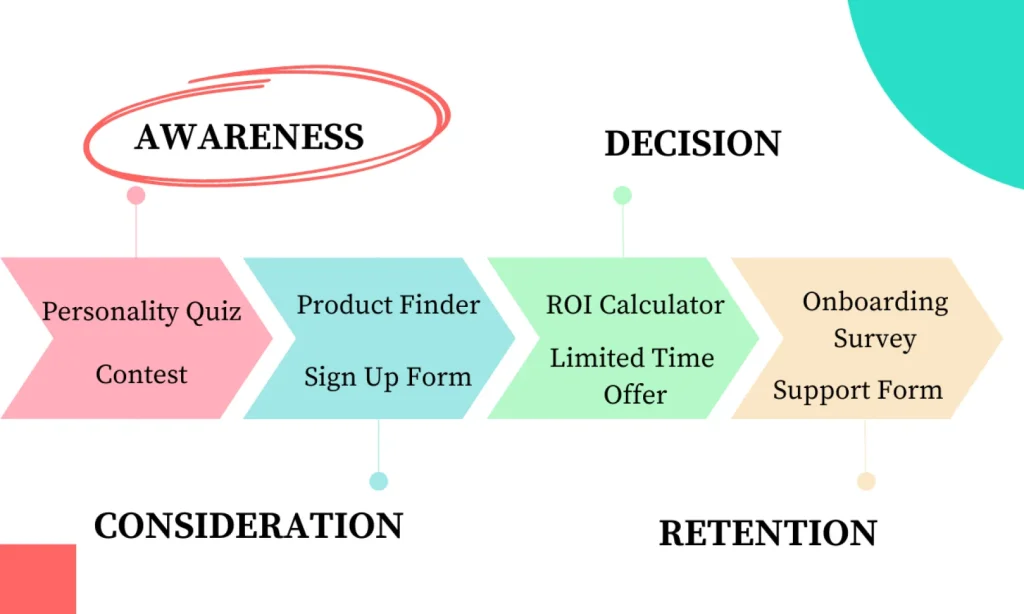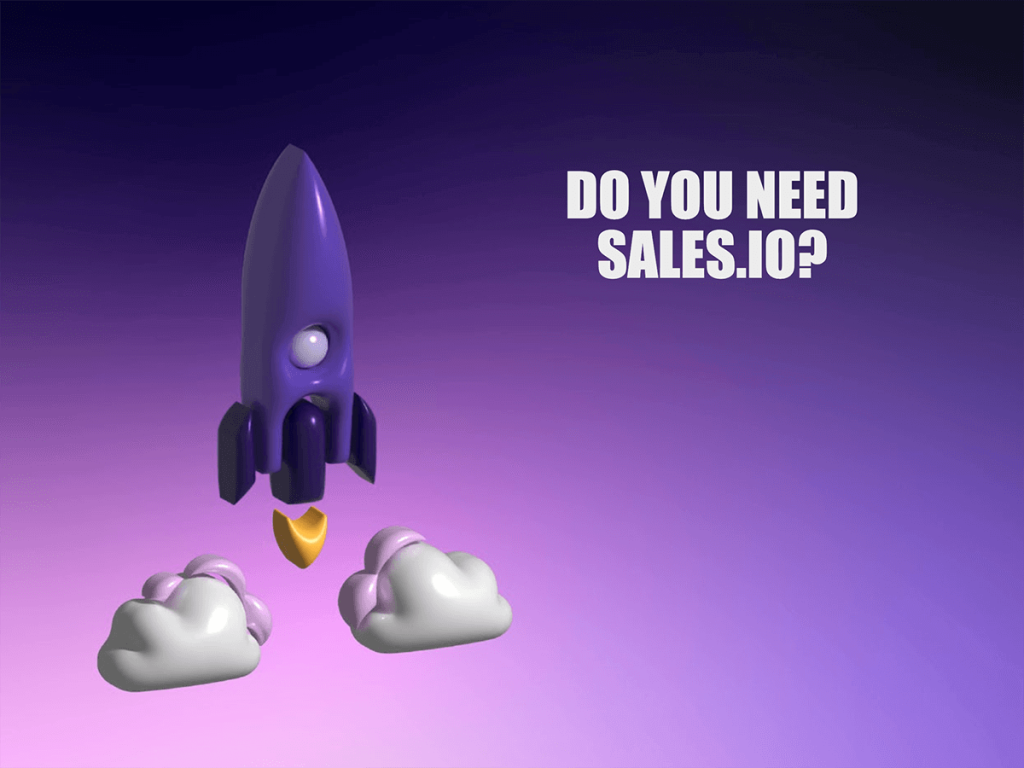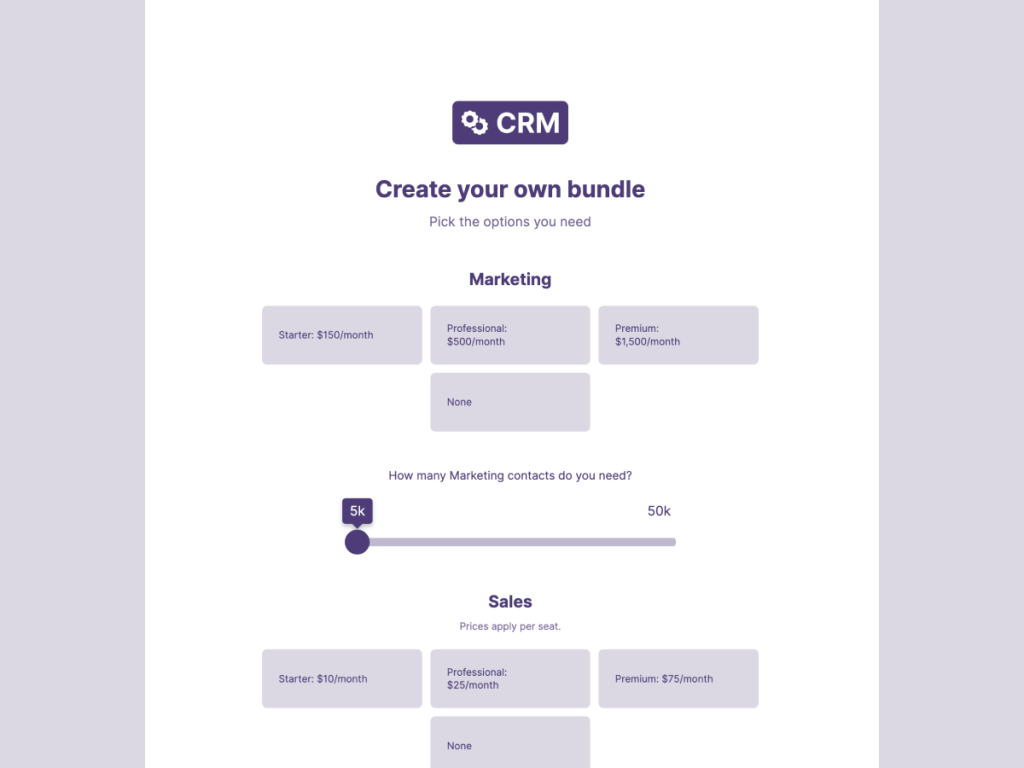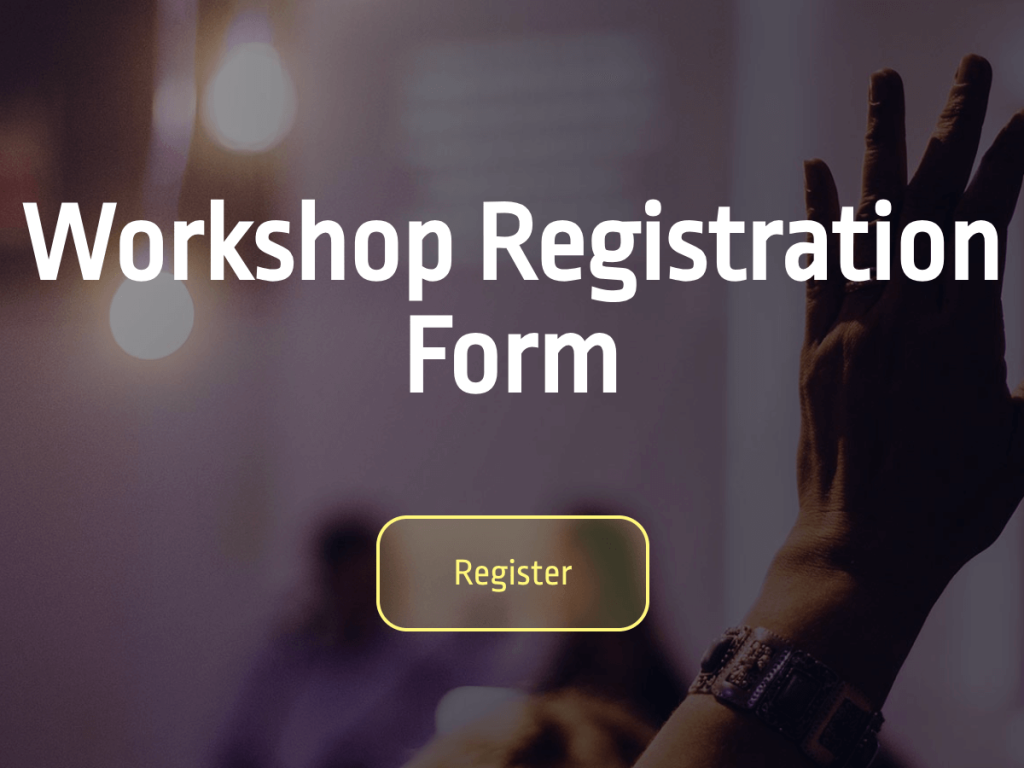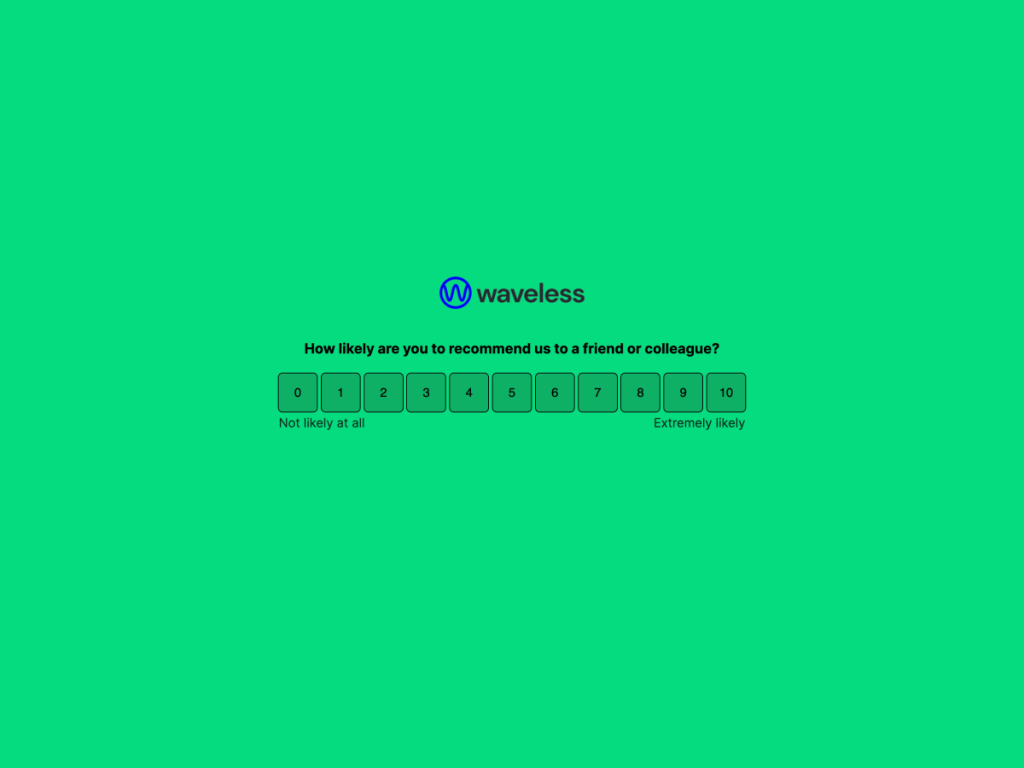Over 2,000 AI startups launched in the last six months of 2023, setting the stage for exponential growth in the martech landscape.
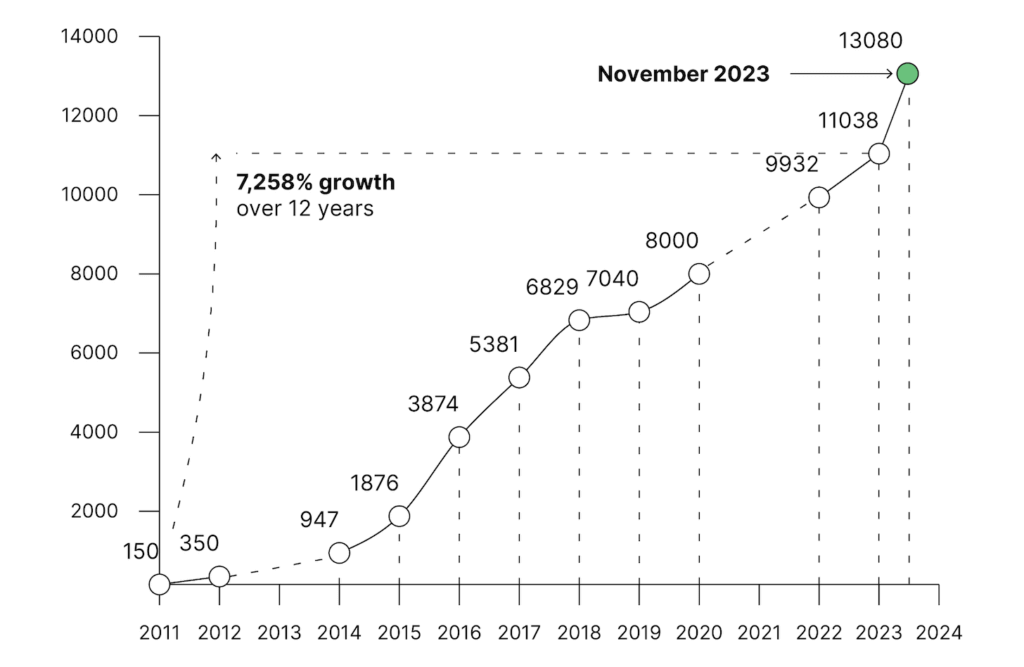
To capitalize on the opportunities AI presents, marketing teams are always looking for new strategies to improve targeting, personalization, automation, and efficiency.
However, they often overlook:
The need for an AI implementation strategy that meets the company’s specific needs and objectives.
The limitations of generic approaches in addressing nuanced requirements. For example, a broad customer segmentation strategy that overlooks nuanced factors that drive buying decisions.
To deliver better business outcomes and customer experiences using AI, marketers need a comprehensive AI marketing funnel strategy that aligns with their unique goals.
This tailored approach allows them to integrate AI into their marketing funnel, optimizing each stage of the buyer’s journey.
This article will show you how to create an AI marketing funnel, focusing on how AI can enhance your marketing funnel. By the end, you’ll have a clear plan for using AI to create more efficient, personalized, and effective marketing campaigns.
1. Map Out Your Marketing Funnel
A marketing funnel illustrates the customer’s journey, from awareness to decision. It outlines the steps your prospects will take as they move through the buying process.
Mapping out your marketing funnel helps you understand the customer journey in different buying stages. It also helps you identify and address bottlenecks that hinder their progression to the next stage.
Follow these steps when mapping out your marketing funnel:
Define your ideal buyers. Who are you trying to reach and sell to? What are their needs, goals, and pain points?
Outline the stages of your funnel. Typically, a sales funnel has stages like awareness, consideration, decision, and retention. Tailor these stages based on your marketing and sales cycle.
For each stage, map customer touchpoints and identify how prospects interact with your brand.
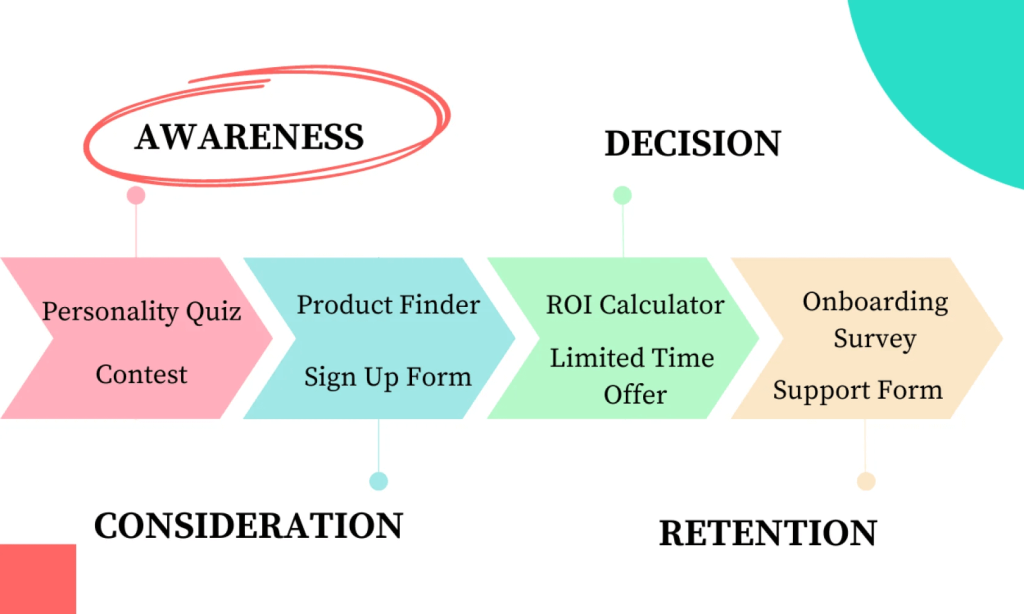
Assign the marketing tactics you use to move prospects from one stage to another.
Awareness: Content marketing, SEO, paid ads, social media
Consideration: Sales emails, retargeting ads,
Decision: Free trials, live chat comparison guides, customer testimonials
Retention: customer surveys, customer support interactions
2. Identify Opportunities Where You Can Integrate AI
To identify particular stages and touchpoints in your marketing funnel where integrating AI will deliver the highest impact and return on investment, consider the following:
Customer experience and engagement: Where can AI improve customer experience and customer engagement throughout the sales funnel? Examples of use cases include providing personalized interactions, faster response times, and 24/7 availability.
Data analysis and insights: Are you collecting large volumes of customer data but struggling to extract valuable data-driven insights? Consider using AI to analyze this data to understand customer behavior, preferences, and intent to optimize targeting and messaging.
Repetitive and scalable tasks: What activities and high-volume tasks can you delegate to AI tools like a marketing funnel tool to improve efficiency?
Test this AI tool to create interactive tools for your website such as forms, surveys, and quizzes:
Create your survey with AI
Just paste your URL & click generate
Here’s an expanded and more actionable version, focusing on how AI can be used effectively in each marketing funnel stage, with examples:
Awareness: Deliver Relevant and Personalized Content
In the awareness stage of the marketing funnel, your prospects are looking for informative and engaging content to help them learn how to solve their problems or meet their needs.
Even in the early stages of awareness, prospects prefer content that aligns with their search intent and addresses their pain points rather than generic, one-size-fits-all social media posts and content.
Integrate AI into your marketing funnel to help you scale data analysis from audience research and marketing surveys to identify patterns and predict audience interests. It allows you to create and distribute content that resonates with your target audience.
Use the valuable insights you gather from your analysis to prioritize content creation that answers these questions to improve engagement and conversion rates.
A prime example is how SoFi integrates the concept of APY versus interest rates into its funnel to enlighten potential customers about the benefits of its checking and savings accounts.
By explaining the distinction between APY, which accounts for compounding interest, and a standard interest rate, SoFi educates its audience. It showcases the superior growth potential of savings through its products.
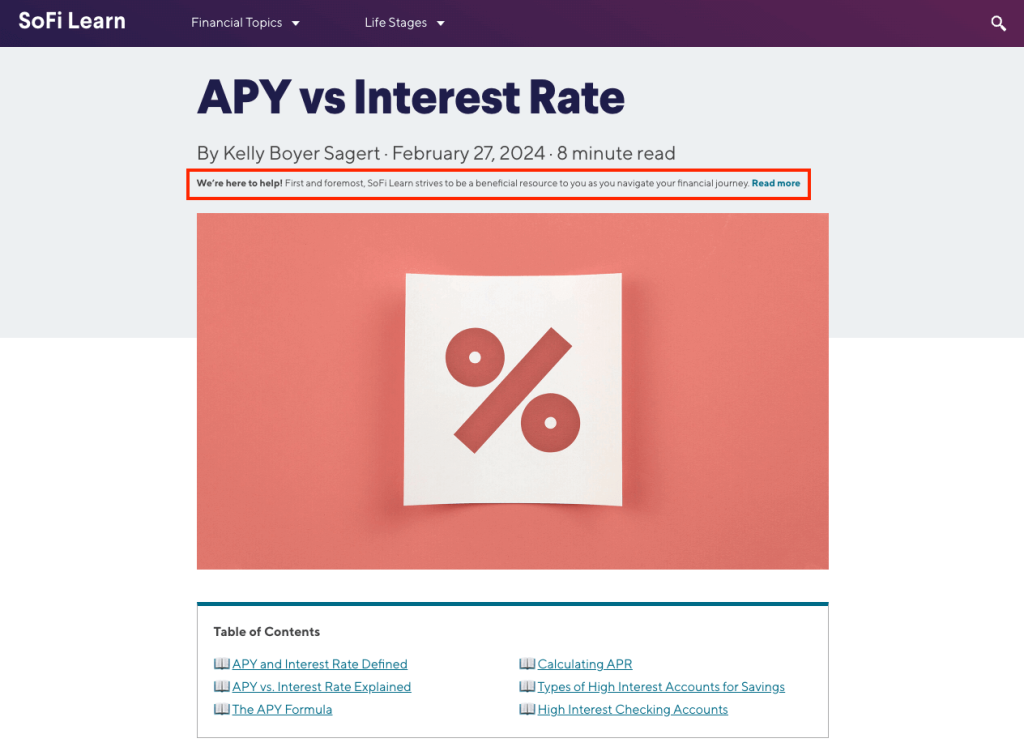
This approach informs and builds trust, positioning SoFi as a valuable resource in financial decision-making.
As potential customers progress through the sales funnel, this blend of informative content and product promotion encourages them to consider opening accounts, demonstrating how targeted educational content can be a powerful tool in a digital marketing strategy.
With relevant and personalized content, you can boost your brand’s visibility. Use AI tools to promote your content through targeted advertising and channels where your potential customers are active, like online communities and social media.
Consideration: Improve Your Lead Qualification Process
During the consideration phase, your prospects evaluate possible solutions to their needs.
They collect information, compare alternatives by looking at their features and benefits, and then assess how well these solutions can solve their problems.
During the consideration stage, your goal is to identify and nurture high-quality leads so that you can differentiate their offerings and guide B2B customers toward the right purchase decision.
Integrating AI into your lead qualification process can help you integrate data from your CRM tool, website tracking tools, and other data sources like quizzes.
Once you generate potential leads, you can send them a quiz to learn more about what they’re looking for so that you can segment them.
An eyewear consultant, for example, can use AI to create a shoppable eyewear quiz to know what kind of glasses their potential customers are looking for and segment them based on their responses:
Check this guide to learn how to create an similar quiz for your website.
With these segments, you can automatically log lead activities and update scores, effectively expanding the range of data points you analyze and increasing the accuracy of lead scoring and qualification.
Thanks to behavioral data, AI can also turn your marketing funnel into a personalized path for each qualified lead. As users interact with your content, AI tools analyze their actions — types of pages viewed, time spent on each page, and type of content they download — to understand their interests and needs.
Using this data, you can trigger personalized emails based on lead behaviors and profile data, ensuring that prospects receive messages and content that’s highly relevant to their current interests and needs.
Another way to nurture your leads is through delivering conversational experiences like chatbots, providing product recommendations, and guiding leads to the next stage: Decision.
Decision: Overcome Objections and Improve Your Conversion Rate
Leads in the decision stage have narrowed down their options and want to pick one solution from their list. However, they’re still evaluating value propositions, looking for content that addresses their objections, and looking for social proof.
At this stage, they want to build a business case for their chosen solution and gain stakeholders’ approval. So, you need to deliver content experiences that address common objections.
Use AI in the decision stage to provide relevant content recommendations tailored to address specific objections leads have in the decision stage.
AI tools map common objections to relevant sales content and case studies, using natural language processing to understand buyer context and intent.
It then helps you deliver the most relevant videos, guides, case studies, or ROI data from your content library to resolve these objections.
This ensures buyers get personalized, data-driven responses that provide transparency, build confidence, and accelerate decision-making by overcoming doubts (a fate most sales teams deal with) and sharing the right content at the right time.
If, for instance, you’re a legal consultant who guides new entrepreneurs on how to start a business in Texas and other states, then you’ll run into common objections such as pricing. Leads want to know how much they’ll pay and compare that with the value they get from your services.
You can address this objection by being transparent about your pricing by using our price quote calculator so that your leads can get a custom quote based on their needs:
Check this guide to learn how to create a similar price calculator for your website.
Retention: Increase Customer Lifetime Value
In the retention phase, customers have already paid for your product and are evaluating if the product meets their expectations.
They want support and guidance to help them get more value from their purchase and are open to building a long-term relationship with you (read: they are loyal customers).
Integrate AI to improve their level of satisfaction through responsive support to common customer questions and AI-guided onboarding to help them get more value from your product.
If you’re running an ecommerce store, provide personalized product recommendations based on past orders and browsing behavior. Use an AI-powered chatbot to handle order tracking and customer support queries.
Lastly, use predictive analytics to identify at-risk and dormant customers and trigger a re-engagement email sequence to encourage a repeat purchase.
Consider using an AI-powered survey builder to create customer surveys and customize them for different products and customer segments. Get started with pre-designed survey templates:
Gather more customer feedback
Start with a customizable template
Discount Calculator Template
Sales Qualified Lead Score Calculator Template
Flowers Order Form Template
Price Quote Calculator for Software Template
Workshop Registration Template
Opinion Scale Survey for Manufacturing Template
Once you collect customer feedback data from various sources, such as survey responses, product reviews, social media comments, and support interactions, use AI to analyze this feedback.
AI will apply natural language processing techniques like sentiment analysis models and topic modelling to understand the general customer sentiment toward your product, service, or brand.
This analysis will identify underlying emotions, common themes, issues with your product, and the quality of customer service. These insights will help you know what to prioritize to improve customer satisfaction and score new potential clients.
Check this case study on how involve.me analyzed 12.193 customer reviews in less than a minute with the help of AI.
Conclusion
When integrating AI into your marketing funnel and sales processes, prioritize stages that deliver more ROI by enhancing the efficiency of your operations, providing a better customer experience, and saving costs.
As you do this, track your performance metrics before and after integrating AI to accurately measure its impact on business outcomes. The data you collect will guide you as you gradually expand the use of AI in your marketing funnel.
Start integrating AI into your marketing funnel and sales efforts today by signing up for a free account with involve.me and creating your first AI-powered online form.
Work smarter, not harder, with the right funnel builder software and funnel reporting tool.

